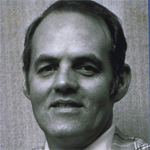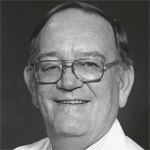As the Association of Rheumatology Health Professionals (ARHP) continues to celebrate its 50th anniversary, The Rheumatologist recently spent time with Charter Member and Past President Marlin N. Shields, RPT, discussing the history of the ARHP and the changes he has seen in rheumatology.
One topic that was, and remains, near and dear to him is collaborative care and patient empowerment. Although some may see these as two different topics, he often speaks of the two as one, with a belief that collaborative care is all about patients—what is in their best interest and how to provide the best care to meet their needs.
Although collaborative care and patient empowerment may just be reaching the main stage in healthcare, Mr. Shields remembers his first introduction to the idea, which came via a forward-thinking rheumatologist in the 1950s.
New Careers & New Approaches to Care
Two healthcare professionals met in the 1950s at the University of Utah. One was a rheumatologist, John R. Ward, MD (1923–2004), who had just completed his training in Boston. The other was a physical therapist, Mr. Shields, who had recently graduated from Stanford University, Palo Alto, Calif., and joined the university’s staff.

Marlin N. Shields, RPT
Mr. Shields was prepared for the typical physician–PT relationship: Physicians would tell therapists exactly what to do, they would execute those orders, patients would receive treatment, and the hospital would bill the payer for the services.
“When I graduated from physical therapy school, physical therapists, occupational therapists and others worked on specific orders from physicians,” Mr. Shields explains of the expectation. “They would write ‘hot pack on right shoulder for 15 minutes,’ and you simply carried out the orders. So there was no question that we worked for the physicians.”
But he quickly realized that Dr. Ward had a different idea—a more collaborative idea. Dr. Ward was interested in what healthcare professionals could do to help him, and he began the process of working with the healthcare team to learn about their skills and abilities.
“Dr. Ward wanted my opinion. He wanted all of us to be thinking and contributing. He listened. And from that, we—rheumatologists, OTs, PTs, social workers, surgeons, etc.—formed a team where everyone had input.”
The Patient on the Team
A vital part of collaborative care for the team was ensuring patients played an active role in their treatment programs—making them a part of the team—and as Mr. Shields progressed in his career, this became a top priority for him.

John R. Ward, MD
Mr. Shields notes that from the 1950s through the 1970s, passiveness in patients remained. His group of collaborative healthcare professionals wanted to change that. “The thing we were most interested in was making sure patients got out of the mold of having things done to them. We aimed to advise, counsel and help our patients, and part of that was empowering them to play an active role. They were the ones living with rheumatic diseases each day, and we felt strongly they needed to learn how to manage them.”
With that, Mr. Shields’ mindset shifted from therapist to teacher—giving patients the tools to manage their diseases and the impact those diseases had on their lives.
“We began educating patients to play an active role on their care teams. There was, and is, no cure for rheumatic diseases, but there were, and are, a lot of things that could be a benefit if professionals work together and teach the patients to become active participants, not passive recipients of the treatment,” Mr. Shields explains.
Advocating for New Ideas: A Presidential Focus
With change comes the need for more change. And collaborative care was no exception. As Mr. Shields became more involved in the rheumatology community, he also became an advocate for his patients and profession.
With health professionals actively participating in the creation—not just implementation—of care plans, there was a need to influence payment systems. At the time, payment was received only when health professionals implemented a treatment directed by a physician. This didn’t leave any room for reimbursement for the work of forward-thinking care teams that were operating as a cohesive unit.
“We reached out to the Arthritis Foundation and other physicians and health professionals who wanted similar care teams and started working toward this as a common goal,” explains Mr. Shields. “We wanted to influence other professionals. And by getting them together, we could influence the payers to realize that we would provide better care for patients at a lower cost if we all worked together,” he says.
This continued to influence Mr. Shields in his role as ARHP president from 1972–74, when he continued to work on the concept of collaborative care teams with empowered patients. “I really got my first glimpse of collaborative care in the 1950s and began championing the patient as a part of that team shortly thereafter.”
To Mr. Shields, these concepts are not new, but are many years in the making. As the shrinking rheumatology workforce continues to address the needs of millions of patients—particularly the aging baby boomer population—rheumatology is poised to continue to build forward-thinking care teams with pioneering health professionals and empowered patients, all working together.
“These were important topics during my presidency, and they remain important topics for the ARHP, rheumatology and our patients today. When patients feel empowered by us they function at a higher level and live happier lives.”



